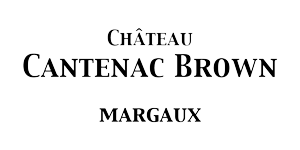After introducing you to Cabernet Sauvignon and Merlot, we couldn’t stop there. Consequently, the teams of Château Cantenac Brown propose you to discover the Cabernet Franc. This incredible grape variety is particularly present at the château and allows us to obtain wines of great finesse and touch. In this article, we discover this grape variety and all its secrets.
The history of Cabernet Franc
Cabernet Franc is a red grape variety, belonging to the Carmenets family. It is often associated with Cabernet Sauvignon and Merlot. It expresses its full potential in the Bordeaux region and in the Loire. Moreover, its antiquity is not in doubt as studies show that it is none other than the father of Cabernet Sauvignon.
According to Guy Lavignac, a famous ampelographer known for his research on the grape varieties of the South West, the Cabernet Franc would have spread in France thanks to the pilgrims of Saint Jacques de Compostelle. We can date its appearance in the Bordeaux vineyards from the 1st century AD. We have to wait until the 11th century, nearly 1000 years later, to find the first traces of it in the vineyards of the Loire.
Identifying the Cabernet Franc
This emblematic grape variety of our region is recognizable under different aspects. It is possible to recognize it physically in the vineyard but also, naturally, during your tastings.
Recognizing Cabernet Franc in the vineyard
To recognize Cabernet Franc in the vineyard, you only need to pay attention to the physical composition of the vine. This grape variety is recognizable by its medium-sized, cylindrical-conical and more or less compact bunches with small and medium-sized berries having a thin skin. If you walk through the vineyards during the harvest, Cabernet Franc ripens at least a week earlier than Cabernet Sauvignon.
Recognizing the Cabernet Franc in tasting
To recognize Cabernet Franc in the glass or in tasting, it’s easy! The wine is very fruity and has dense aromas of red fruits, but it still varies according to the terroir and the maturation of the wine. It has a clear color in the glass as well as in the bottle. Its color is less intense than the others. It is more tannic and earthy than Cabernet Sauvignon and has a rustic side. Thanks to its finesse, its aromas and its clarity, the identification of this variety is easier.
It is known to have a green bell pepper, herbaceous aroma but there is an explanation for this. Indeed, if this variety is not harvested at perfect maturity, it is possible that it has a high level of pyrazines. These are responsible for those green bell pepper aromas. However, when mature, it will have fine aromas of red fruits such as raspberry or blueberry.
The cultivation of Cabernet Franc
The vineyards of Bordeaux and the Loire are the favorite lands of this variety. Today, this grape variety is present throughout Europe, particularly in Italy, where it is classified as an additional grape variety in many appellations. It is also present in the rest of the world and in prestigious vineyards in the United States and South America. That said, France retains the leading position in its production by holding 80% of the area cultivated with Cabernet Franc in the world.
What to drink Cabernet Franc with?
The finesse, acidity and freshness of Cabernet Franc are assets to achieve high quality food and wine pairings. For a wine made only from this grape variety, you will be able to match it with a good number of dishes that echo its vegetal side. Peppers, rice or mushrooms will be your best allies. Wines made from this grape variety can also be enjoyed as an aperitif with a nice plank of cold cuts.
Moreover, this grape variety can also be blended, as at Château Cantenac Brown, with Merlot and Cabernet Sauvignon. In this context, you can choose interesting gastronomic combinations. You can also associate this wine with a nice meat: wine and prime rib will be a must.


